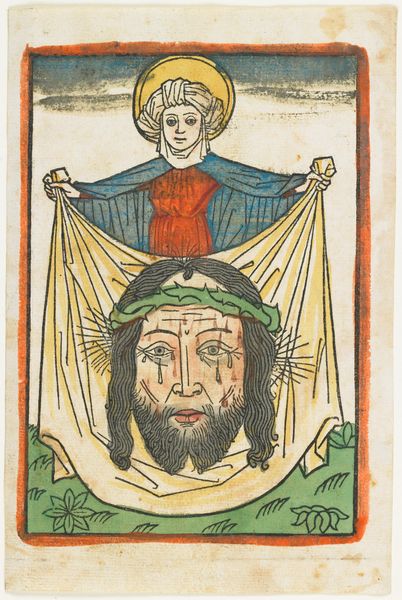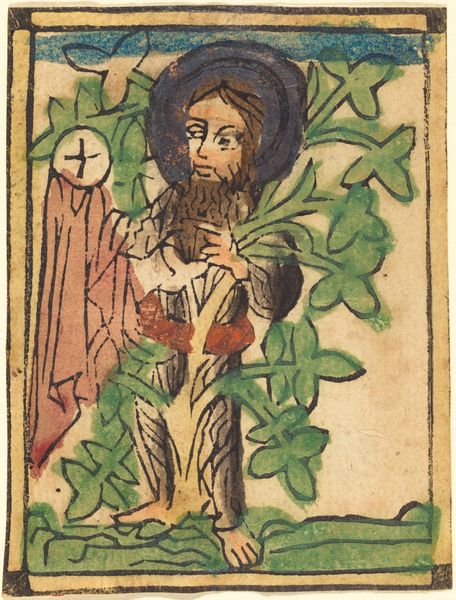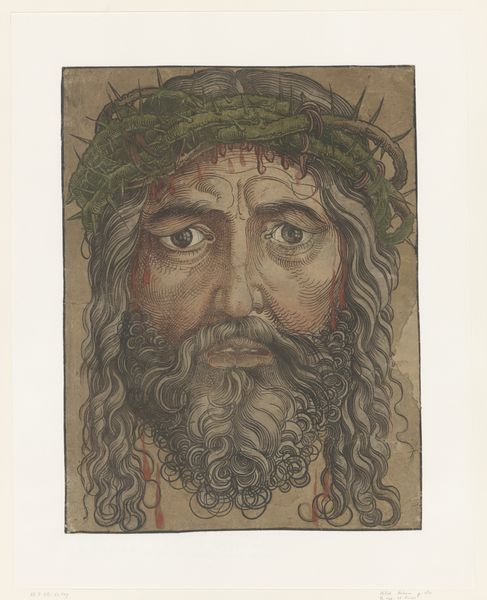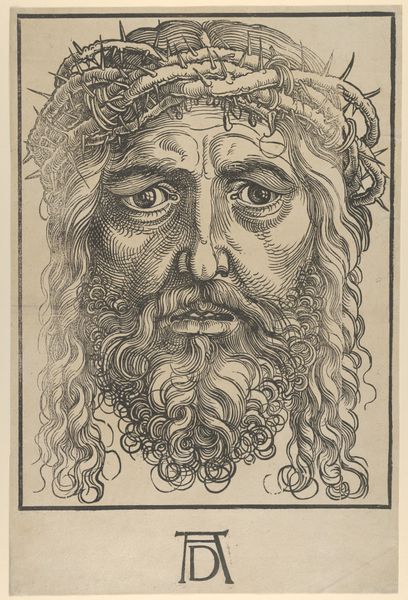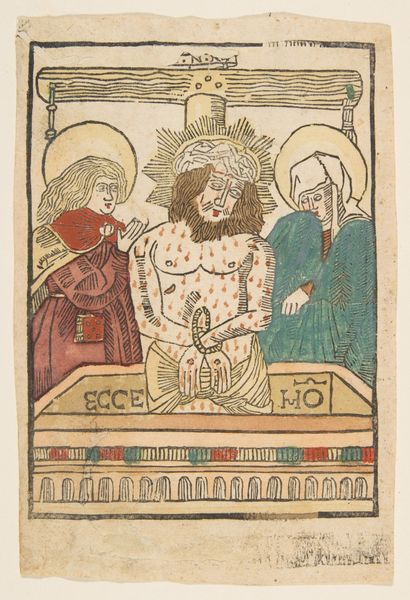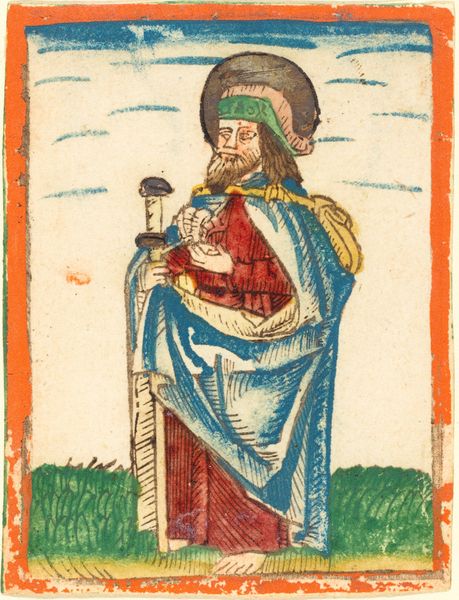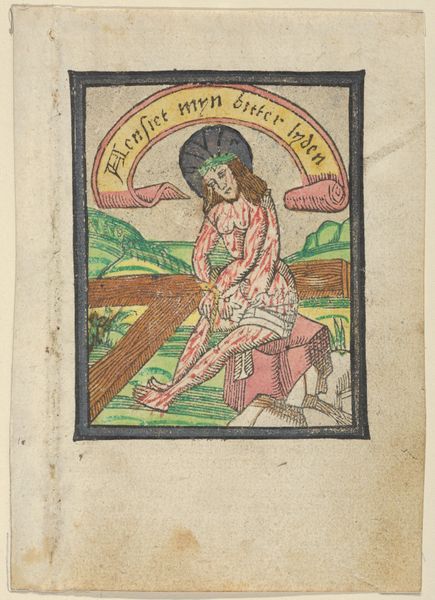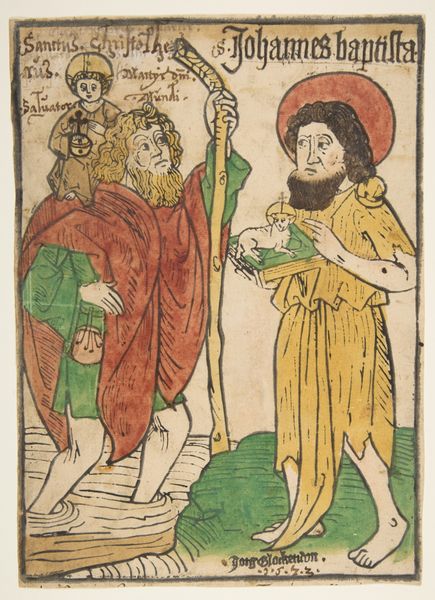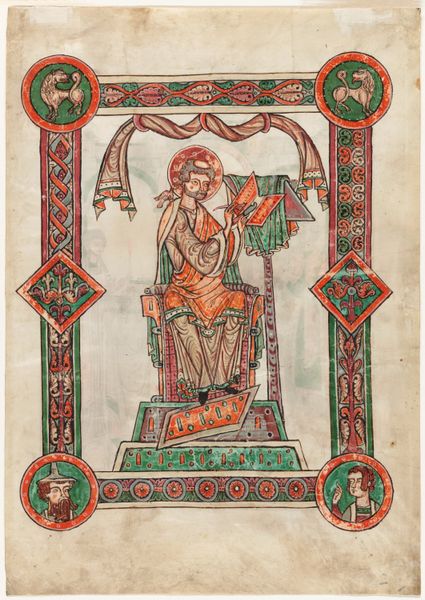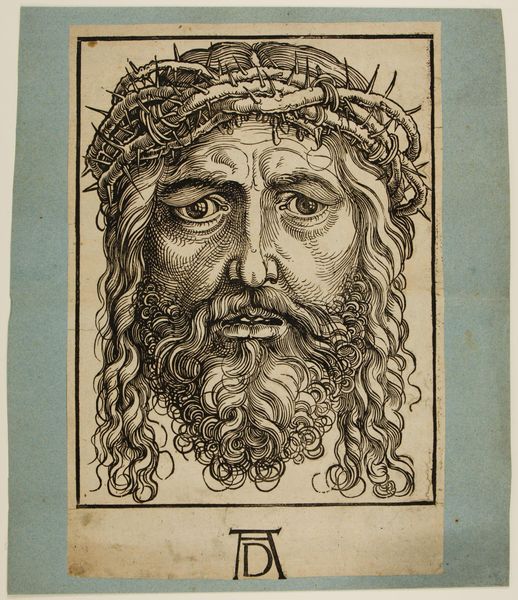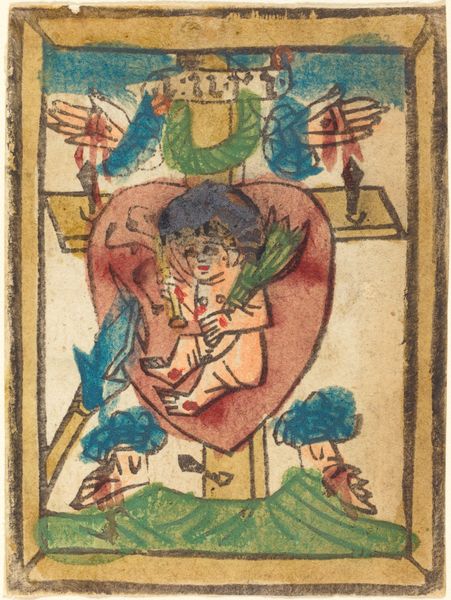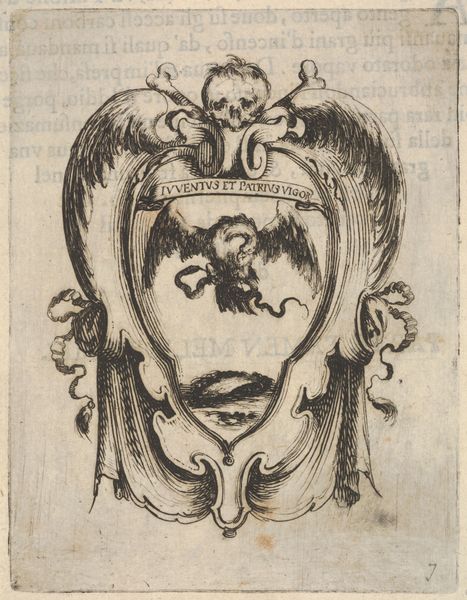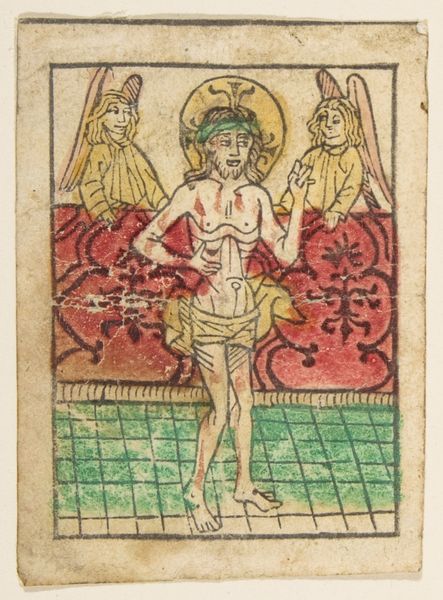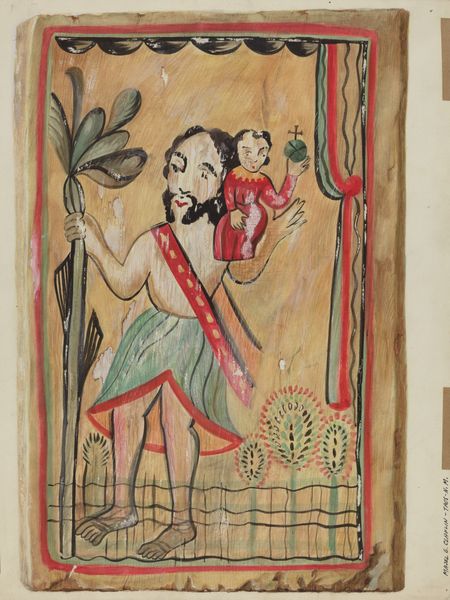
drawing, coloured-pencil, print
#
portrait
#
drawing
#
coloured-pencil
#
medieval
# print
#
caricature
#
caricature
#
11_renaissance
#
coloured pencil
#
history-painting
#
christ
Dimensions: Block: 10 1/8 × 7 5/8 in. (25.7 × 19.4 cm) Sheet: 11 1/16 × 8 1/8 in. (28.1 × 20.6 cm) Frame: 21 × 16 in. (53.3 × 40.6 cm)
Copyright: Public Domain
Curator: This is "The Sudarium" by Hans Schlaffer of Ulm, created sometime between 1460 and 1485. It's currently held at the Metropolitan Museum of Art. The piece combines drawing and printmaking techniques, primarily using colored pencil. Editor: Gosh, that's... intense. His gaze just follows you. It’s almost confrontational, even in its weariness. And the stylization, particularly the flattened perspective of the face against that ornate background, it’s both arresting and a little unsettling. Curator: The composition adheres to a strict symmetry, which reinforces the iconic nature of the image. Note the patterning in the background; it seems almost to press forward, flattening the spatial relationships, directing our eye to the face. Editor: That’s a very clinical way of putting it. To me, the patterning feels… like a gilded cage. The thorns feel aggressively green against the ochre and earth tones elsewhere. The color choices alone set off this almost painful vibration of tension. Curator: The formal elements you highlight certainly amplify the emotional impact. The linework, although somewhat crude by later standards, emphasizes the subject's suffering, but it simultaneously suggests the idealization inherent to religious iconography. It’s a carefully calibrated balance of suffering and majesty. Editor: Majesty? Perhaps, but to my eyes, it looks almost like a caricature, not to diminish from its obvious spiritual aspects. Schlaffer seems almost on the edge of illustrating pathos. He also is accentuating vulnerability. There is also this real earthy humanity here that seems more approachable to me than distant royal-like splendor. Curator: The concept of approachability would undoubtedly be crucial for its intended devotional context. Editor: I hadn’t considered that. A print like this would probably allow believers who cannot go to church often a more tactile reminder. The materiality itself, the paper and the colored pencil marks, suggests a closeness, like a tangible meditation. Curator: It is a striking encapsulation of late medieval piety and artistry. Thank you for shedding light on its expressive, emotional, possibilities.
Comments
No comments
Be the first to comment and join the conversation on the ultimate creative platform.
